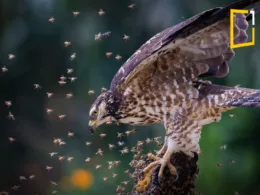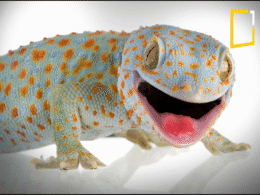Imagine a structure that maintains a constant internal temperature, regardless of the external weather. It has a natural ventilation system and can regulate humidity levels without the need for complex machinery. Sounds like a futuristic building, right? Well, this is actually the everyday reality for termite mounds. These incredible structures, built by tiny insects, offer a treasure trove of architectural secrets that are now inspiring sustainable architecture around the world.
:max_bytes(150000):strip_icc()/__opt__aboutcom__coeus__resources__content_migration__treehugger__images__2012__10__02-termite-mound-fcb4d95804204568b1e27a6ee19f3beb.jpg)
Discover the Fascinating World of Termite Mounds
What are termite mounds?
Termite mounds are intricate structures built by certain species of termites, primarily found in tropical and subtropical regions. These mounds can vary greatly in size, from small, inconspicuous heaps to towering edifices reaching over 30 feet high.
How Termite Mounds Are Constructed?
Termites use a combination of soil, saliva, and feces to construct their mounds. The resulting structure is a highly durable, self-sustaining ecosystem that can withstand various environmental challenges.
The Role of Termites in Mound Construction
Termites are not just builders but also engineers. They work collectively, following innate patterns to create complex networks of tunnels and chambers. Each termite has a role, whether it’s gathering materials, maintaining the structure, or ensuring proper ventilation.

Architectural Secrets of Termite Mounds
Natural Ventilation Systems
One of the most remarkable features of termite mounds is their natural ventilation system. The mounds are designed to facilitate airflow, ensuring that fresh air continuously circulates throughout the structure.
Temperature Regulation Mechanisms
Termite mounds maintain a stable internal temperature, regardless of external conditions. They achieve this through a combination of structural design and the strategic placement of their tunnels and air pockets.
Humidity Control
Maintaining optimal humidity levels is crucial for termite survival. The mounds are designed to absorb and release moisture, keeping the internal environment humid but not too wet.
Structural Stability and Materials Used
Termites use locally sourced materials that are both strong and sustainable. The structure of the mound is inherently stable, capable of withstanding external pressures such as wind and rain.
Inspiring Sustainable Architecture
Concept of Biomimicry in Architecture
Biomimicry involves drawing inspiration from nature to solve human problems. In architecture, this means designing buildings that mimic the efficiency and sustainability of natural structures like termite mounds.
Examples of Buildings Inspired by Termite Mounds
Several modern buildings have been inspired by the principles found in termite mounds, leading to innovative and sustainable designs.
Case Study
The Eastgate Centre in Harare, Zimbabwe
The Eastgate Centre is a prime example of biomimetic architecture. Designed by architect Mick Pearce, this building uses principles of natural ventilation and temperature regulation found in termite mounds. As a result, it uses 90% less energy for ventilation than conventional buildings.
The BIQ House in Hamburg, Germany
The BIQ House incorporates biomimicry in its design, using algae in its façade to produce bioenergy and regulate the building’s climate. This innovative approach reflects the natural efficiency found in termite mounds.
The BIQ House in Hamburg, Germany
The BIQ House incorporates biomimicry in its design, using algae in its façade to produce bioenergy and regulate the building’s climate. This innovative approach reflects the natural efficiency found in termite mounds.
Ventilation Systems
Detailed Look at How Termite Mounds Ventilate
Termite mounds have a network of tunnels that allow air to flow freely. Warm air rises through the central chimney, drawing in cooler air from lower parts of the mound. This constant airflow ensures that the mound remains well-ventilated.
Applying These Systems in Modern Buildings
Architects can apply these principles by designing buildings with natural ventilation shafts and strategically placed openings that promote air circulation without the need for mechanical systems.
Temperature Regulation of termite mounds
How Termites Maintain Constant Temperatures
Termites achieve temperature regulation by constructing their mounds with thick walls that insulate the interior. Additionally, the strategic placement of tunnels allows for the movement of warm and cool air to balance the internal temperature.
Adapting Termite Strategies for Human Use
Incorporating thick, insulating walls and natural airflow systems can help modern buildings maintain a stable internal climate, reducing the need for artificial heating and cooling.
Humidity Control
Mechanisms Termites Use to Control Humidity
Termite mounds are designed to absorb excess moisture and release it when needed. This is achieved through the porous nature of the building materials and the strategic placement of ventilation shafts.
Implementing These Systems in Buildings
Modern buildings can incorporate materials that naturally regulate humidity and design features that promote moisture control, such as green walls and natural ventilation systems.
:max_bytes(150000):strip_icc()/termite-mounds-29a516bddf704303adf5144cc9159b0d.jpg)
Materials and Structural Stability
Materials Termites Use for Construction
Termites use soil, saliva, and feces to create a durable material. This mixture hardens over time, creating a structure that is both strong and flexible.
Lessons for Sustainable Material Use in Architecture
Using locally sourced, sustainable materials can reduce the environmental impact of construction. Additionally, materials that can adapt to environmental changes enhance the durability and longevity of buildings.
Energy Efficiency
Energy Efficiency in Termite Mounds
Termite mounds are incredibly energy-efficient, relying entirely on natural processes to maintain their internal environment. This reduces the need for external energy sources.
Making Buildings More Energy-Efficient Through Biomimicry
By incorporating natural ventilation, temperature regulation, and humidity control systems, buildings can significantly reduce their energy consumption. This not only lowers costs but also minimizes the environmental impact.
Challenges and Limitations
Challenges of Mimicking Termite Mounds
One of the main challenges is translating the principles of termite mound construction into human architecture. The scale and materials are different, and human buildings have more complex needs.
Limitations of Current Technology
Current technology may not fully replicate the efficiency of termite mounds. However, ongoing research and innovation are bridging the gap, making biomimetic architecture more feasible.
Future Prospects
Potential Future Developments
Advancements in materials science, environmental engineering, and architecture are paving the way for more buildings inspired by termite mounds. Future developments may include even more efficient natural ventilation and temperature regulation systems.
Research and Advancements in Biomimetic Architecture
Continuous research is crucial for advancing biomimetic architecture. By studying natural systems and applying their principles, architects and engineers can create more sustainable and efficient buildings.
Benefits of Biomimetic Architecture
Environmental Benefits
Biomimetic architecture can significantly reduce the environmental impact of buildings. By using natural processes and sustainable materials, it minimizes resource consumption and waste.
Economic Benefits
Energy-efficient buildings can lower operating costs, making them more economical in the long run. Additionally, sustainable buildings often have higher market value and attract environmentally conscious tenants.
Health Benefits
Buildings that incorporate natural ventilation and temperature regulation create healthier indoor environments. This can improve air quality, reduce respiratory issues, and enhance overall well-being.
Conclusion
Termite mounds, with their sophisticated design and efficient systems, offer invaluable lessons for sustainable architecture. By studying and mimicking these natural structures, we can create buildings that are not only more efficient and environmentally friendly but also healthier and more comfortable for occupants. As research and technology continue to evolve, the future of architecture looks increasingly inspired by the ingenious solutions found in nature.
—————————————————————
Thanks for joining this wild ride. Stay curious, stay tuned, and let’s make our world brighter!
Check out the latest blog and video on YouTube and learn something new today.
Attention, all readers! To deepen your understanding and stay informed on the latest news and trends, be sure to click on the link to access more informative articles.
Join the family by liking us on Facebook, or follow us on Twitter and Instagram.
If you liked this story, sign up for the weekly OneMinuteExplore features newsletter called “The Essential List”. A handpicked selection of stories from OneMinute Nature, Wildlife, Culture, Travel, Stories, and more… delivered to your inbox every Weekend.
👉 We may earn a commission from purchases made through links in this content, but it won’t affect your price. Rest assured, our recommendations are based on thorough research and genuine belief in the products. Your support through these links helps us continue providing valuable content. Thank you for your support!











